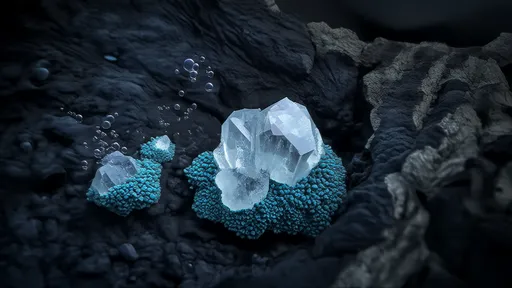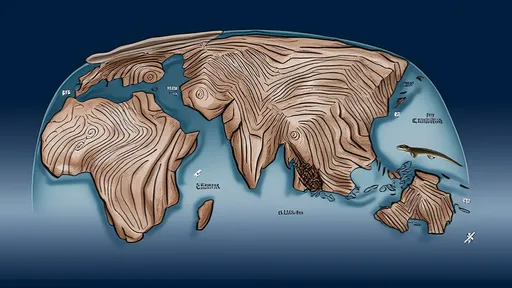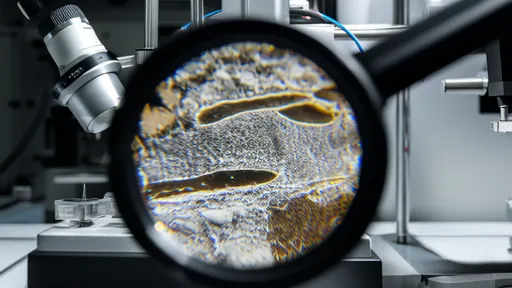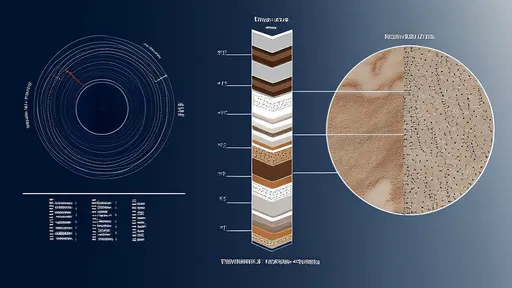The study of hydrothermal ore deposits has long fascinated geologists and mineral explorers alike. These deposits, formed by the circulation of hot, mineral-rich fluids through the Earth's crust, represent some of the most economically significant sources of metals such as gold, copper, and zinc. However, understanding the precise origins of these metals and the fluids that transport them has remained a complex puzzle. Recent advances in isotopic tracing techniques are now providing unprecedented insights into the sources and pathways of these geological fluids.
Isotopic fingerprints have emerged as powerful tools for decoding the history of hydrothermal systems. By analyzing the ratios of stable isotopes like oxygen, hydrogen, sulfur, and lead, researchers can trace the migration of fluids and identify their original sources. These isotopic signatures act as natural tracers, revealing whether the metals were derived from magmatic sources, sedimentary basins, or even ancient seawater. The ability to distinguish between these sources has profound implications for mineral exploration, as it allows geologists to target areas with the highest potential for ore formation.
The application of fluid inclusion analysis coupled with isotopic studies has opened new windows into the temperature, pressure, and composition of ancient hydrothermal fluids. Microscopic bubbles of trapped fluid within minerals preserve snapshots of the conditions during ore formation. When analyzed isotopically, these inclusions can reveal not just the source of the metals, but also the evolutionary path of the fluid as it interacted with different rock types along its journey. This dual approach has been particularly valuable in understanding how metals become concentrated to form economic deposits.
One of the most significant breakthroughs has been the recognition that many hydrothermal systems represent mixed sources of metals and fluids. Traditional models often assumed single sources, but isotopic evidence increasingly shows that the most productive ore deposits frequently result from the mixing of fluids from different reservoirs. For instance, magmatic fluids rich in metals might mix with meteoric water or modified seawater, creating chemical conditions ideal for metal precipitation. This understanding has revolutionized exploration strategies, as it suggests that areas where different fluid regimes interact may be particularly prospective.
The development of non-traditional stable isotopes, such as those of iron, copper, and zinc, has added another dimension to fluid source tracing. These metals-specific isotopes provide direct information about the origin and transport history of the ore metals themselves, rather than just the fluid that carried them. Recent studies using these techniques have revealed unexpected metal sources in some deposits, including contributions from country rocks that were previously underestimated in ore formation models.
Understanding the temporal evolution of hydrothermal systems has also benefited greatly from isotopic studies. By combining radiogenic isotope systems with careful geological dating, researchers can now reconstruct the duration and pulsation of fluid flow events that formed ore deposits. This temporal perspective is crucial, as it shows that many large deposits form through multiple episodes of fluid flow over millions of years, rather than through single, catastrophic events.
The implications of these advances extend beyond academic interest. Mineral exploration companies are increasingly incorporating isotopic tracing into their targeting strategies. By identifying the isotopic fingerprints associated with productive deposits in a region, explorers can prioritize areas with similar signatures. This approach has already led to several significant discoveries in mature mining districts where traditional exploration methods had failed to identify new resources.
Looking ahead, the field of geological fluid isotopic tracing continues to evolve with technological advancements. New mass spectrometry techniques allow for analysis of smaller samples with greater precision, while computational modeling helps interpret complex isotopic datasets. These developments promise to further refine our understanding of hydrothermal systems and the formation of their valuable metal deposits. As the demand for critical metals grows in our technology-driven world, such insights will become increasingly valuable for sustainable resource development.
Beyond economic applications, these studies are providing fundamental insights into Earth's chemical cycles. The movement of metals through hydrothermal systems represents an important pathway in the planet's geochemical evolution. By decoding these processes, scientists gain a better understanding of how Earth's crust has developed over geological time, and how its mineral resources came to be distributed as we find them today.
The integration of isotopic tracing with other geological disciplines is creating a more holistic view of ore-forming processes. Structural geologists, geochemists, and geochronologists are combining their expertise with isotopic data to build comprehensive models of hydrothermal systems. This interdisciplinary approach is yielding new theories about the connections between plate tectonics, fluid flow, and metal concentration that will guide the next generation of mineral exploration and resource assessment.

By /Jun 19, 2025

By /Jun 19, 2025

By /Jun 19, 2025

By /Jun 19, 2025

By /Jun 19, 2025

By /Jun 19, 2025

By /Jun 19, 2025

By /Jun 19, 2025

By /Jun 19, 2025

By /Jun 19, 2025

By /Jun 19, 2025

By /Jun 19, 2025

By /Jun 19, 2025

By /Jun 19, 2025

By /Jun 19, 2025

By /Jun 19, 2025

By /Jun 19, 2025